There are many articles and videos online claiming that “proven” or “real conspiracy theories” exist. These claims are used to justify the conspiracy theorist worldview, giving the impression that it is reasonable to reflexively dismiss “the official story” and assume secret organizations are behind everything. Pretending history vindicates conspiracy theorists (CTers) distorts the past and emboldens a new generation to embrace even crazier ideas.
Instead of presenting evidence of genuine conspiracy theories uncovered against all odds, those pushing these narratives rely on misdirection (Standard Operating Procedure for CTers). They take controversial or unethical events—often shocking and offensive—and twist them into examples of “proven” conspiracy theories. This misrepresentation not only distorts the truth but it fuels the very thinking that leads people to embrace conspiracy theories in the first place.
CTers often argue that “a conspiracy is just two or more people plotting together and a theory is just an idea. If you suspect that two people are planning a crime, you’re a conspiracy theorist.” This definition ignores how terms evolve to take on specific meanings in different contexts. By that logic, ice cream would be nothing more than ice with cream poured over it. Just as ice cream describes something specific and unique, so too does “conspiracy theory.” It refers to a worldview that looks for and pretends to find, super secret, immensely powerful actors behind every significant event. Typically, CTers make up their “theories” without any credible evidence and often in defiance of overwhelming proof to the contrary. Most absurd of all, the alleged plots CTers believe in frequently play out over multiple generations, requiring new people to join the conspiracy and continue with plans they had no part in making.
Without understanding this, it’s easy to confuse unethical or secretive behavior with conspiracy theories; and this is exactly what these articles and videos do, blending bad actions, mistakes, and anything secretive into a vague affirmation of CTer thinking. A frequent example of this confusion is the Tuskegee Syphilis Experiments, which is readily cited as a “proven” conspiracy theory, over and over again.
The Tuskegee experiments were, without question, horrific and unethical. For decades, African American men were lied to and denied treatment for syphilis by U.S. government researchers in the name of studying the disease’s progression. This was a monumental failure of ethics and human decency, but it was not a conspiracy theory. There was no vast, secret, coordinated plot to deceive the public or cover up the research’s nature. It was open and known to those within the system, who were not kept quiet by threats or intimidation. The story tells us much about institutional racism, and the history of white supremacy, but it has nothing to tell us about clandestine conspiracies
CTers continue to claim that anyone who questioned Tuskegee was dismissed as a conspiracy theorist until they were proven right, but this has no basis in reality. It’s the story that CTers wish was true, so they assume it is. CTers ignore the fact that it was a government employee, a whistleblower, who told the public what was going on, after several years of trying to convince his bosses to shut the program down. To acknowledge this would be an admission that they have been pushing fake history; so they just keep on pushing the fake history instead.
I previously wrote an article that breaks down Tuskegee and why it is not an example of a real conspiracy theory. I encourage you to look at the details because misrepresenting such events does a disservice to the victims and stops future generations from learning meaningful lessons. Here, however, is a quick look at several other examples of so-called “proven conspiracy theories,” which fall apart under the slightest scrutiny.
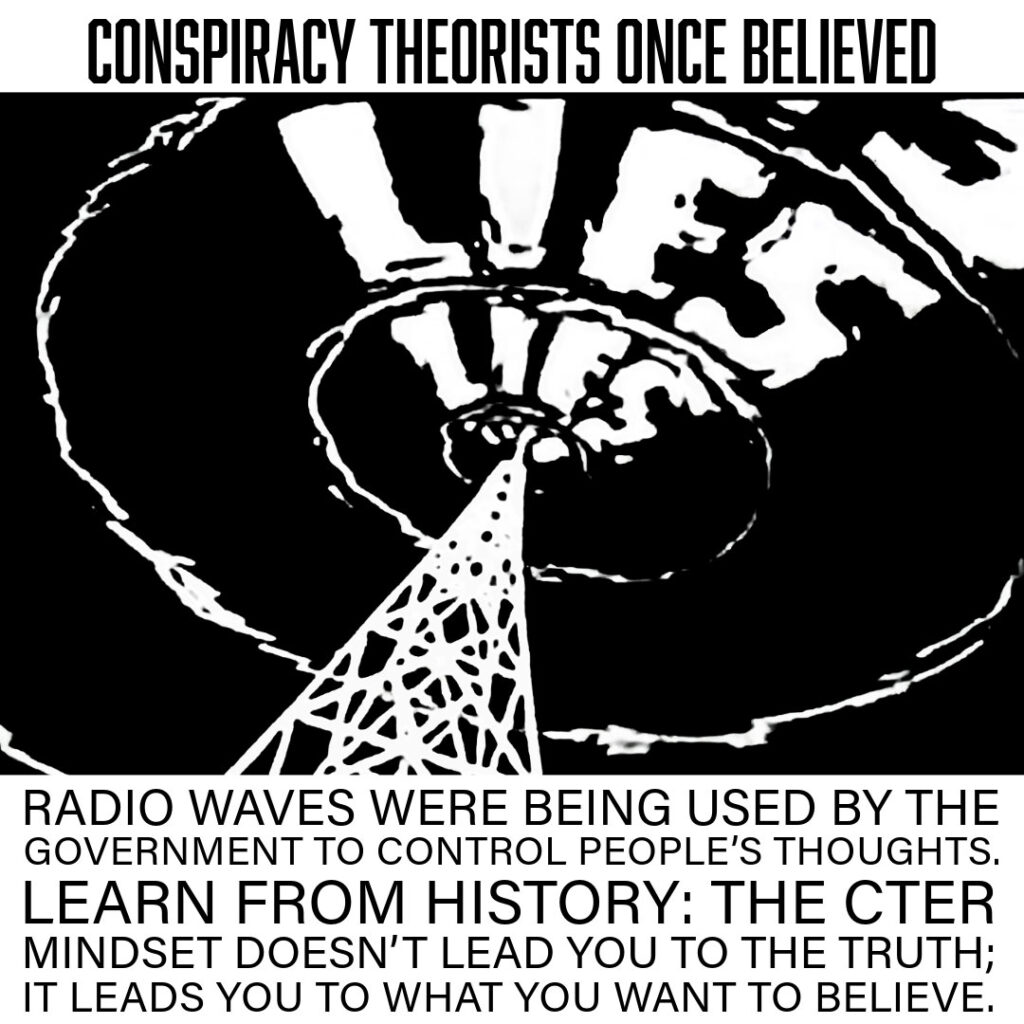
Case Studies in Real Conspiracy Theories
1. The Heart Attack Gun
This weapon, allegedly developed by the CIA, was mentioned during Senate hearings as a device that could “potentially” cause fatal heart attacks without detection. There’s no evidence the gun worked or was ever used. But even if it had been, this would not make it a conspiracy theory. Governments, militaries, and private industries routinely develop secretive technologies as part of national defense. Secret development is not the same as a secret plot.
2. Operation Northwoods
This Cold War-era proposal from the Department of Defense involved staging false flag attacks to justify U.S. military intervention in Cuba. Immoral and impractical, the plan was rejected by President Kennedy at its earliest stages. There is no evidence that it was ever pursued after Kennedy’s rejection or revived by later administrations. Including it as a “proven conspiracy theory” ignores these facts.
CTers are obsessed with false flag operations, imagining they are common and highly effective. Again, this fits the story they want to believe but not the historical facts. Both the Nazis, in Poland, and the Japanese in Manchuria famously used false flag “attacks” on their soldiers to pretend invasion was necessary, and no one believed them. This is typical of false flags. They are rarely effective.
3. CIA Funding of Media
During the height of the Cold War, the CIA funded journalists, media organizations, and artists to promote anti-Soviet messages. Contrary to conspiracist claims, the goal was not to control American or global media but to combat Soviet influence. Much of this funding went to left-wing, anti-communist groups and individuals, including democratic socialists. The CIA’s focus was on opposing Soviet propaganda, not manipulating public perception wholesale.
4. MK-Ultra
The CIA’s MK-Ultra program, infamous for its bizarre experiments with LSD, is often cited as proof of a real government conspiracy theory. While MK-Ultra was deeply unethical and poorly managed, it doesn’t fit the definition of a conspiracy theory. MK-Ultra was an extension of military experiments—typically conducted with voluntary consent—but under CIA oversight, the experiments devolved into reckless, unscientific, and unethical behavior, such as using prostitutes to dose unsuspecting individuals. Ultimately, the program was shut down, and we know about it because of the CIA’s internal investigations; not because some brave conspiracy theorists exposed it.
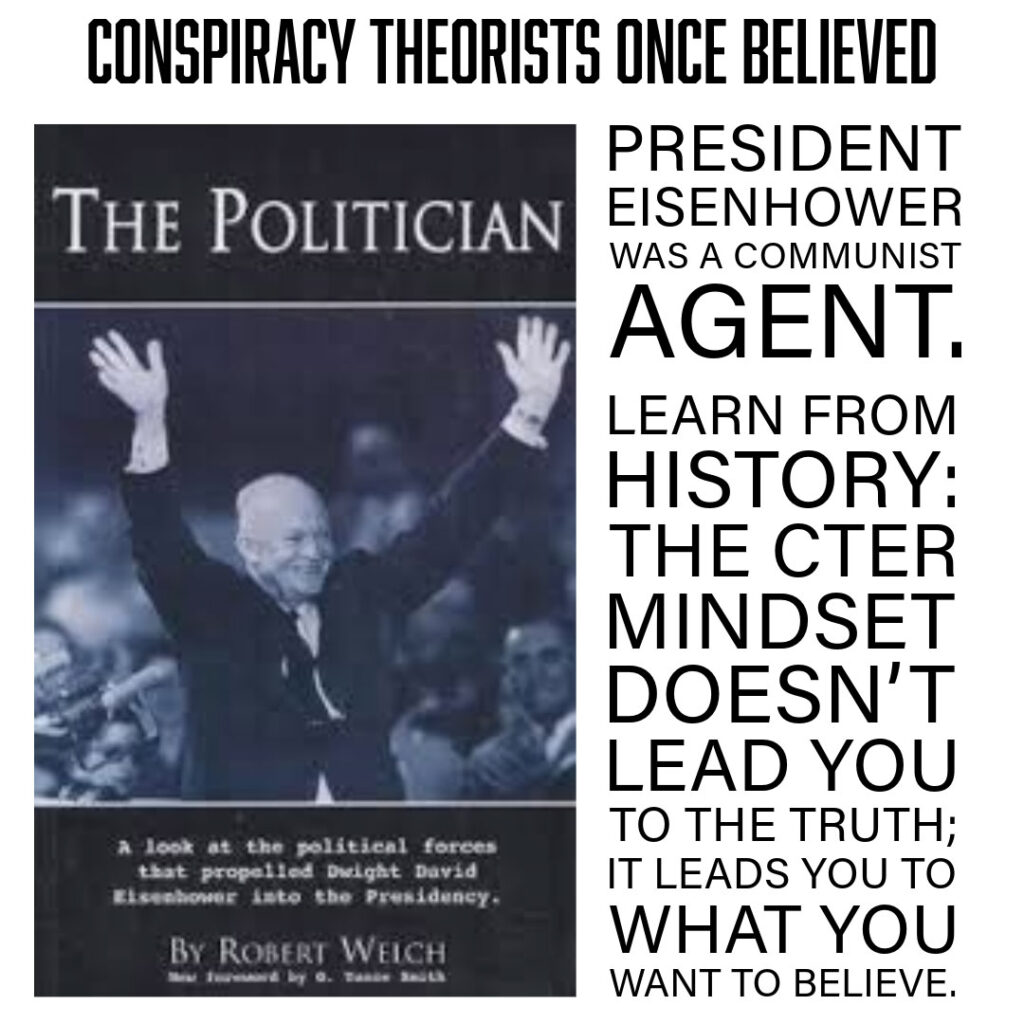
5. Poisoned Alcohol During Prohibition
The claim that the government poisoned alcohol during Prohibition is misleading. The Treasury Department—not the FBI—added poison to industrial alcohol to deter consumption. This was done openly, after laws were publicly debated and passed by Congress, with clear warning labels attached to the alcohol stating it was unsafe to drink. While the ethics of this strategy are questionable, it was not even a covert operation, in any way, let alone a real conspiracy theory.
6. Cancer-Causing Polio Vaccines
In the late 1950s, researchers discovered a potential contamination in polio vaccines that might carry a cancer-causing virus. Production methods were changed within a few years to eliminate the risk, and there’s no conclusive evidence that anyone developed cancer as a result. This was a public health challenge, not a conspiracy.
7. The “Gay Bomb”
This absurd proposal involved developing a weapon to make enemy soldiers sexually attracted to each other, thereby disrupting their combat effectiveness. The idea never progressed beyond the theoretical stage. Like many military R&D concepts, it was bizarre and impractical, not a conspiracy.
8. The Manhattan Project
The Manhattan Project is often cited as an example of a successful, large-scale secret operation. While the development of the atomic bomb involved tens of thousands of people across multiple countries working in secrecy, it was an official government program during wartime, not a clandestine plot operating outside of all institutional oversight. The secrecy was short-lived, as the project became widely known after the bombs were dropped on Hiroshima and Nagasaki, and those involved were motivated by victory over horrific regimes. This was not a criminal conspiracy.
Even before the nature of the project became known, however, countless members of the public were aware that isolated camps and other facilities existed and there was a huge paper trail created that historians and others can access today. Additionally, the US and the UK were unable to hide what they were doing from their wartime allies, the USSR. The limited, short-term secrecy the Manhattan Project was able to achieve does nothing to support the wild speculations that CTers are constantly pushing.
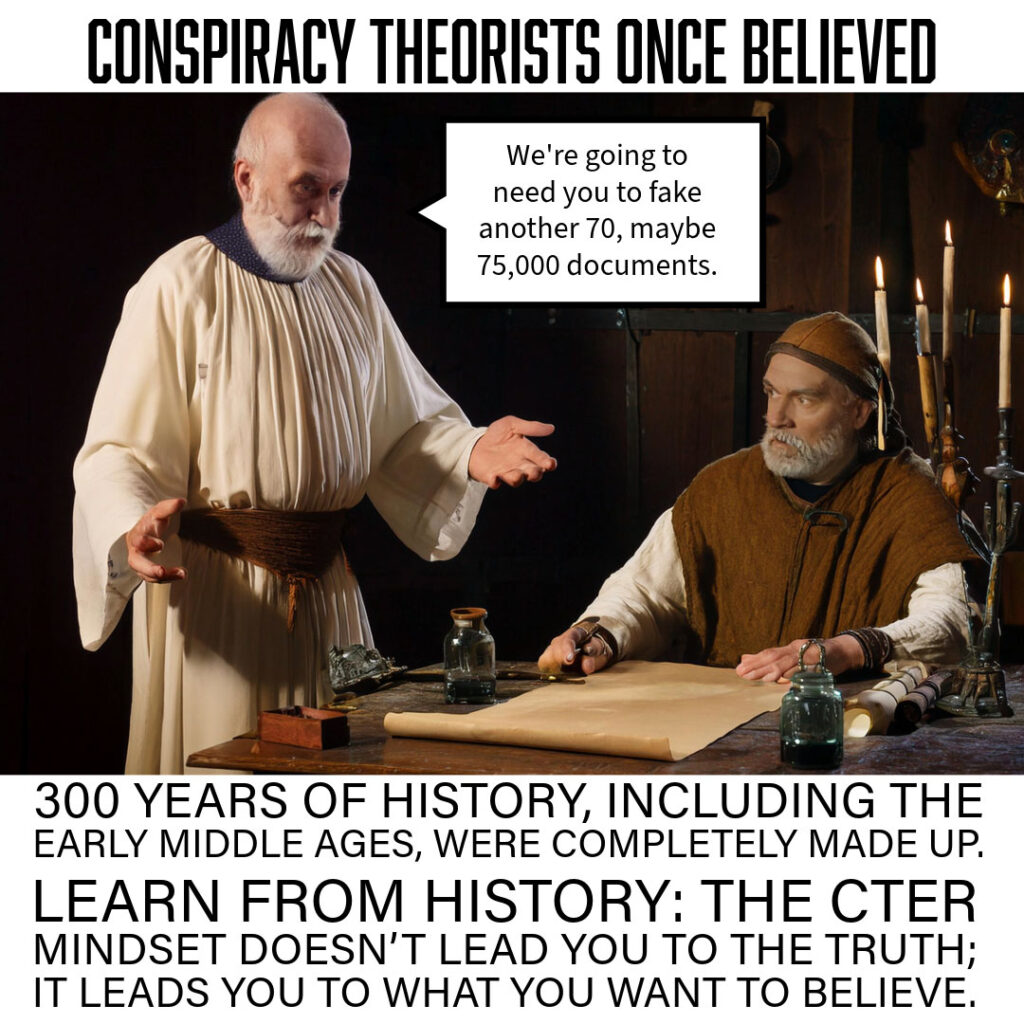
9. The Mafia
The idea of organized crime was far from a conspiracy theory in the mid-20th century. Everyone knew organized crime existed. The real question was how organized it was. For years, FBI Director J. Edgar Hoover publicly denied any national coordination among criminals, likely to protect the FBI’s reputation. However, after a 1957 meeting of the national crime family in Apalachin, New York was disrupted by police and many arrests were made, along with the wiretapping of various criminal figures, by the FBI, even Hoover could no longer deny the scope of the Mafia’s reach. The notion of the Mafia’s existence was not hidden or dismissed as a conspiracy theory; what had been denied was the scope of its organization.
10. Project Paperclip
CTers claim that the U.S. government secretly brought Nazis to America through Project Paperclip without public knowledge, but this is not the case. By 1946, major publications like the New York Times and Newsweek were already reporting on the program, with Newsweek even publishing the code name “Operation Paperclip.” Prominent figures, including Rabbi Steven Wise, Albert Einstein, and Eleanor Roosevelt, openly opposed the recruitment of former Nazis, arguing it was morally wrong to reward them while leaving their victims in displaced persons camps. These criticisms were widely known and not dismissed as “conspiracy theories” at the time. While the program’s ethical implications continue to be debatable, it was not the super secret cover-up that CTers want it to be.
11. Gulf of Tonkin Incident
The Gulf of Tonkin incident, used to justify U.S. escalation in the Vietnam War, is often cited as a “proven conspiracy theory” or “false flag operation.” In reality, the incident was a mix of misunderstanding, miscommunication, and deliberate exaggeration by the Johnson Administration. While officials manipulated the facts to push for congressional approval of vast resources to Vietnam, this was not a secret, well-coordinated, and completely false story. US forces were previously fired upon in the gulf and poor weather conditions convinced radar operators that they were under attack again.
The Johnson Administration was looking for an excuse to get congressional approval for escalation and they ran with a shaky story, but they did not make up the story. There was no conspiracy.
12. Watergate
The Watergate scandal is often presented as proof that massive government conspiracies are real. However, the actual events involved a relatively small group of individuals (about 25) working for Nixon’s reelection and rather small-scale crimes that they failed to pull off. This political scandal was a conspiracy, but it demonstrated how different real world events are from conspiracy theories and does nothing to support CTer thinking.
Like the Gulf of Tonkin Incident and other misidentified “real conspiracy theories,” Watergate demonstrates that lies and deception are difficult to maintain. Institutional mechanisms, whistleblowers, journalists, and historians can bring the truth to light, most of the time. But the wild speculations made by CTers have done nothing to uncover the truth or help us better understand historical events.
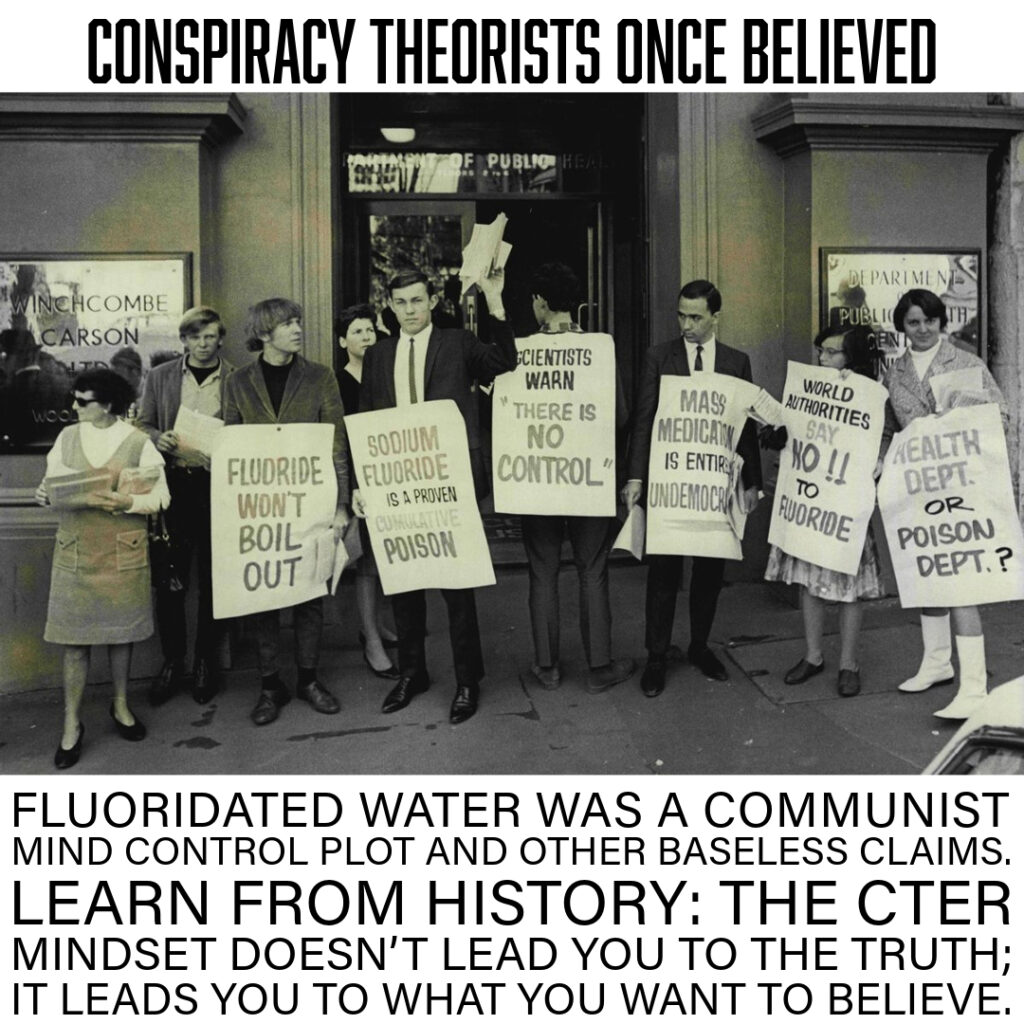
The Danger of Redefining Terms
Why does it matter if we call these events, “real conspiracy theories?” Because doing so fuels dangerous thinking. Conspiracists thrive on the belief that everything is part of a secret plot, and blurring the lines between fact-based history and ahistorical conspiracy theories gives them unwarranted validation.
Worse, it obscures the truth. Mislabeling events distract us from addressing real issues like government overreach or institutional racism. It replaces critical analysis with paranoia, undermining efforts to hold systems accountable.
Rejecting CTers’ flawed narratives about “proven” or “real conspiracy theories” is essential to understanding the world and learning from the past. Critical thinking demands more than the simplistic, sloppy reasoning of CTers, who have nothing to offer but misdirection and lies.



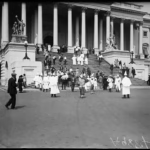



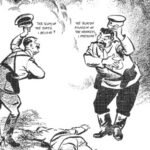





Leave a Reply